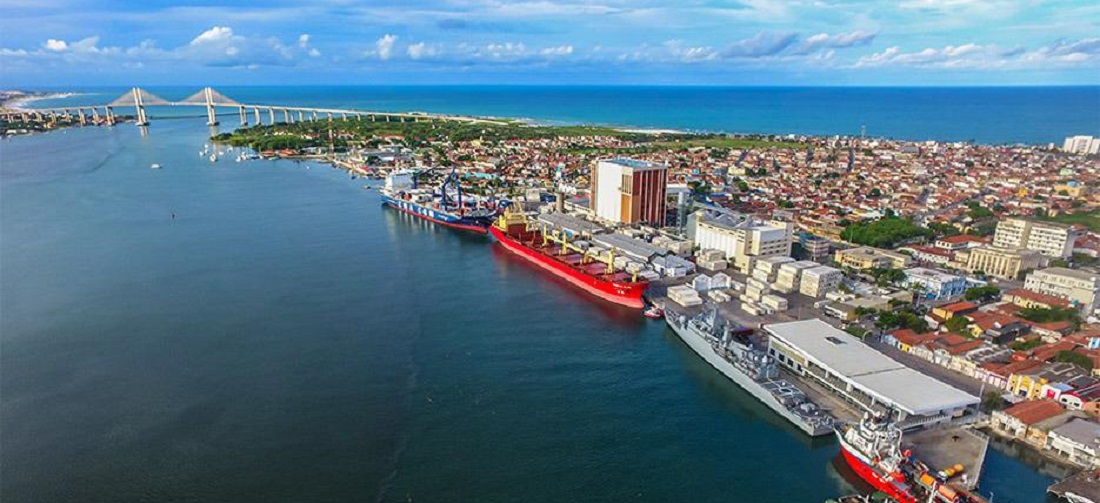
New Porto Potengi Promises Boost in Competitiveness For Exporters
Nov, 13, 2023 Posted by Gabriel MalheirosWeek 202242
“We can’t wait for five or ten years. We are losing our competitiveness,” said Roberto Serquiz, president of the Federation of Industries of Rio Grande do Norte, regarding the importance of an efficient port terminal and how it can influence the state’s economic welfare. This is because there are at least two projects for new ports in the state: Porto Verde in Caiçara do Norte, and Porto Potengi in Natal, on the opposite bank of the current Porto de Natal, which had its viability approved by the National Confederation of Transport (CNT).
According to Serquiz, the current situation of the terminal in the state capital is a “huge bottleneck for the industry” in Rio Grande do Norte. “We are conducting most of our production through Suape [in Pernambuco], Pecém, and Mucuripe [Ceará]. Not only through the ports but also the roads,” analyzed the president of FIERN.
A recent feasibility study sponsored by CNT indicated that the construction of Porto Potengi, on the opposite bank of the Potengi River, is feasible. This new structure would cost R$1.2 billion and take three years to build. If this project becomes a reality, the forecast is for the new facility to start operating in 2029, covering an area of 110 hectares.
Luiz Roberto Barcelos, institutional director of the Abrafrutas fruit exporters association, one of the sectors that rely the most on the infrastructure for export, celebrated the viability of a new terminal in the city. “A new port undoubtedly improves the life of exporters; they will have more competitiveness, more security in the return on investment, will be able to increase investments, generate more jobs, distribute more income. In other words, everyone will undoubtedly benefit,” he said. He emphasized that the current terminal also serves exporters well.
However, according to the president of FIERN, some other issues affecting the current Port of Natal will persist with the new terminal. “The Porto Potengi will face the same problems as the current port, which are lack of defenses, dredging, and maneuvering area,” he said.
A hydrographic study of the Natal Port’s entire channel and turning basin is expected to be completed by November 15. This is the first step toward increasing the depth of the Potengi River through dredging.
The chart below shows container exports from the Port of Natal from Jan 2019 to Sep 2023. The data is from DataLiner.
Container Exports from Natal | Jan 2019 – Sep 2023 | TEU
Source: DataLiner (click here to request a demo)
José Vieira, president of the Federation of Agriculture, Livestock, and Fishing of Rio Grande do Norte (Faern), deems the project interesting. “What concerns me now is accessing this port. And the private sector must be involved in this. I will only support this project if the private sector is involved. But I believe we can make our current port viable. At the very least, we have a project. We had nothing previously,” he commented.
While supported by Vieira, the current terminal was criticized by Luiz Roberto Barcelos. “The port of Natal is in the middle of the most important city in the state. The cargo needs to cross the entire city to reach the port. There are traffic issues and restrictions on truck circulation hours, which hinder exporters. The area is already small; we don’t have an area for empty containers. There’s a draft problem, issues with bridge defenses that limit the entry of larger ships, which have lower operational costs,” he criticized.
And one of the sectors most affected is precisely agriculture. Due to the geographical location and expertise, some producers from neighboring states usually use Rio Grande do Norte for exports. “Our sector has an exit through RN, and it’s one of the best scenarios we could have. It’s not just for the state. Petrolina, cities in Bahia itself, want to export through here because the port specializes in fruit exports. It’s efficient, and the distance to Europe is shorter; it takes seven days to get there. It’s the shortest distance there is. It is essential for the agricultural sector to have and resume fruit exports with containers,” he said.
Source: Agora RN
Click here to access the original publication: https://agorarn.com.br/ultimas/porto-potengi-economia-veem-urgencia-rn/
-
Economy
May, 08, 2023
0
Drought drops Argentinian exports by 15.6%
-
Other Logistics
Jan, 09, 2023
0
New Brazilian administration brings changes to infrastructure and logistics. Find out more.
-
Shipping
Nov, 10, 2022
0
Hapag Lloyd expects to move roughly unchanged volumes in Q4
-
Steel and Aluminium
Dec, 22, 2022
0
Brazil’s aluminum sector wins hard-fought tariffs on Chinese products


